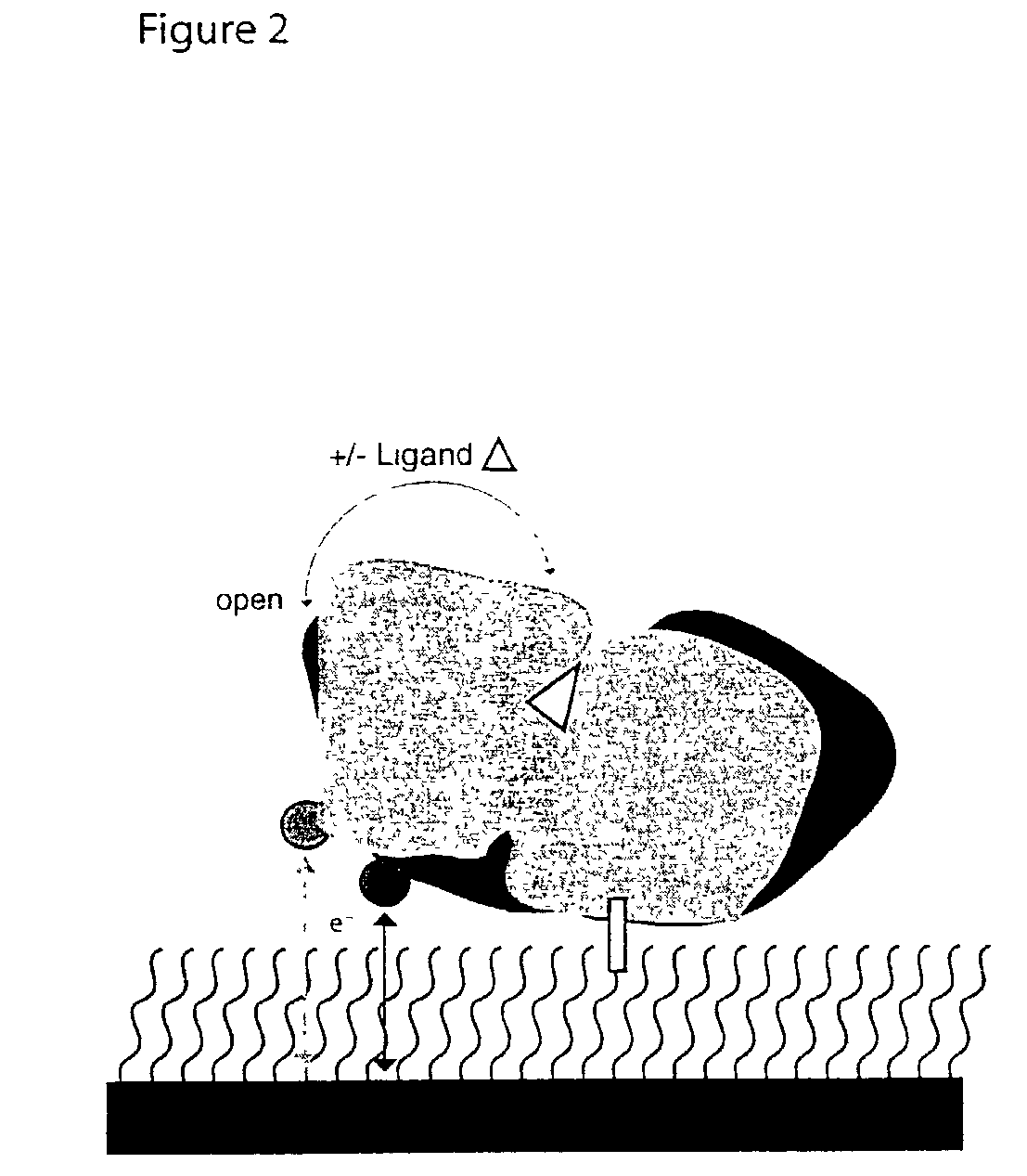Biosensor
a biosensor and sensor technology, applied in the field of biosensors, can solve the problem of few successful bioelectronic sensors
- Summary
- Abstract
- Description
- Claims
- Application Information
AI Technical Summary
Benefits of technology
Problems solved by technology
Method used
Image
Examples
example 1
Chemoresponsive Bioelectronic Assemblies
Experimental Details
[0030]Protein purification and labeling. Proteins were produced and labeled as previously reported (Marvin et al, Proc. Natl. Acad. Sci. USA 94:4366–4371 (1997), Marvin et al, J. Am. Chem. Soc. 120:7–11 (1998)). The thiol-reactive Ru(II) reporting group, [Ru(II)(NH3)4(1,10-phenanthroline-5-maleimide)] (PF6) was synthesized as described (Trammell et al, Bioconjug. Chem. 12:643–647 (2001)).
[0031]SAM formation. 1-mm diameter gold disk electrodes were successively polished with 6, 3, and 1-μm diamond paste and sonicated in water for 1 min between each polishing step. SAMs (self-assembled monolayers) were constructed in a manner similar to a previously published procedure (Thomson et al, Biophys. J. 76:1024–1033 (1999)). The polished electrodes were rinsed with water and immediately incubated in a solution of 11-thiolundecanoic acid (5 mM in ethanol or acetonitrile) for 24 h. Electrodes were then activated (COOH group) by immers...
PUM
| Property | Measurement | Unit |
|---|---|---|
| pH | aaaaa | aaaaa |
| pH | aaaaa | aaaaa |
| midpoint reduction potential | aaaaa | aaaaa |
Abstract
Description
Claims
Application Information
 Login to View More
Login to View More - R&D
- Intellectual Property
- Life Sciences
- Materials
- Tech Scout
- Unparalleled Data Quality
- Higher Quality Content
- 60% Fewer Hallucinations
Browse by: Latest US Patents, China's latest patents, Technical Efficacy Thesaurus, Application Domain, Technology Topic, Popular Technical Reports.
© 2025 PatSnap. All rights reserved.Legal|Privacy policy|Modern Slavery Act Transparency Statement|Sitemap|About US| Contact US: help@patsnap.com



